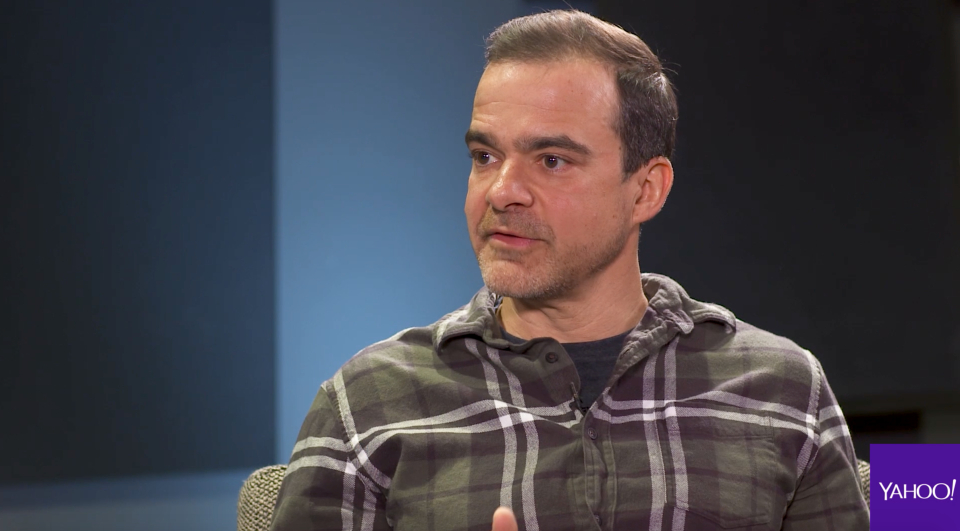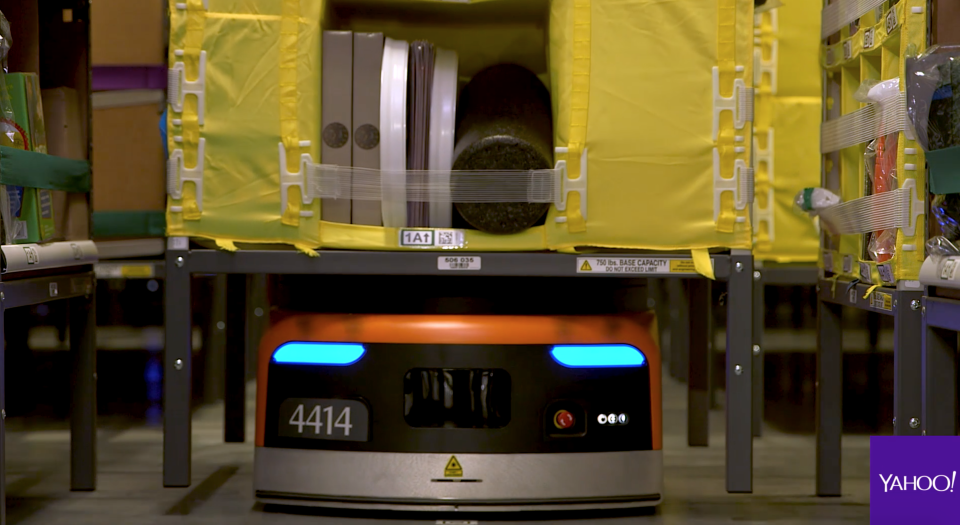Amazon exec: Tech eliminating work is a ‘myth’
Much has been said about technologies such as robotics and automation eliminating millions of jobs over the next few years, but Amazon (AMZN) Worldwide Consumer CEO Jeff Wilke doesn’t foresee the Seattle tech giant contributing much to that alarming stat in the short-to-mid term.
Amazon, which acquired robot-maker Kiva Systems for $775 million in 2012, now has 100,000 robots zipping across 75-plus fulfillment centers in the U.S.
“In the same time as we’ve deployed 100,000 robots, we’ve actually hired 315,000 people,” Wilke explained during a recent interview with Yahoo Finance, which selected Amazon as the Company of 2017. “We have continued to add humans to robots, and I think that’s going to continue for a long time across the economy.”

In fact, Wilke contended that the concept of technology outright eliminating work is a “myth,” based on the last 100 years of technological change and its effect on the broader economy. Sure, some jobs will be lost, but new kinds of jobs for humans will be created — a theory, at least partly borne out by third-party estimates. According to Forrester Research, 16% of U.S. jobs will be replaced, while the equivalent of 9% new jobs will be created — a net loss of 7% of U.S. jobs by 2025. In the long-term, it’s possible that gap could shrink further.
At Amazon’s fulfillment center in Tracy, California — one of more than 75 across the country — some 3,500 people work in tandem with hundreds of robots. After a customer clicks the “Buy” button on Amazon.com, Amazon’s computer algorithms tell one of the robots to pick up the shelf containing that item and bring the shelf to an employee, who picks out the item and sends it on its way to other stations to be packaged and eventually delivered — a highly efficient process Amazon has honed over the years.

For Amazon, offering such streamlined warehouse processes is vital for quickly training workers — it hired 120,000 seasonal workers this holiday season, similar to 2016 — so they can hit the ground running and meet holiday demand. (The Seattle tech giant plans on hiring thousands more employees in 2018, according to jobs site Glassdoor.) Between Thanksgiving and Cyber Monday this year, 140 million products were ordered from and fulfilled by third-party sellers via Amazon, Wilke told Yahoo Finance.
“What’s happened is, technology changes work,” said Wilke. “It changes the work of humans. “It allows them to do higher-quality work. It allows them to be more efficient. It allows them to be safer. I think that kind of thing is going to continue.”
Click here to read more about why Yahoo Finance chose Amazon as its company of 2017 and here to learn more about Amazon’s plans for Alexa. And here, you can see our timeline for Amazon’s path to domination in 2017.
—
JP Mangalindan is the Chief Tech Correspondent for Yahoo Finance covering the intersection of tech and business. Email story tips and musings to jpm@oath.com. Follow him on Twitter or Facebook.
More from JP:
Amazon Web Services CEO: We’re going to see an ‘explosion’ of voice apps
Facebook targets 6- to 12-year-old demographic with Messenger Kids
Intuit CEO: Old-school accountants will be ‘struggling in 5 years’ because of A.I.
How Amazon quickly trains 120,000 employees for the holidays
Why the Russia ad scandal could actually be a win for Facebook
RBC analyst: Only 2 scenarios would spur investors to flee Facebook
LEAKED AUDIO: New Uber CEO Dara Khosrowshahi reveals 3 things employees should know about him

